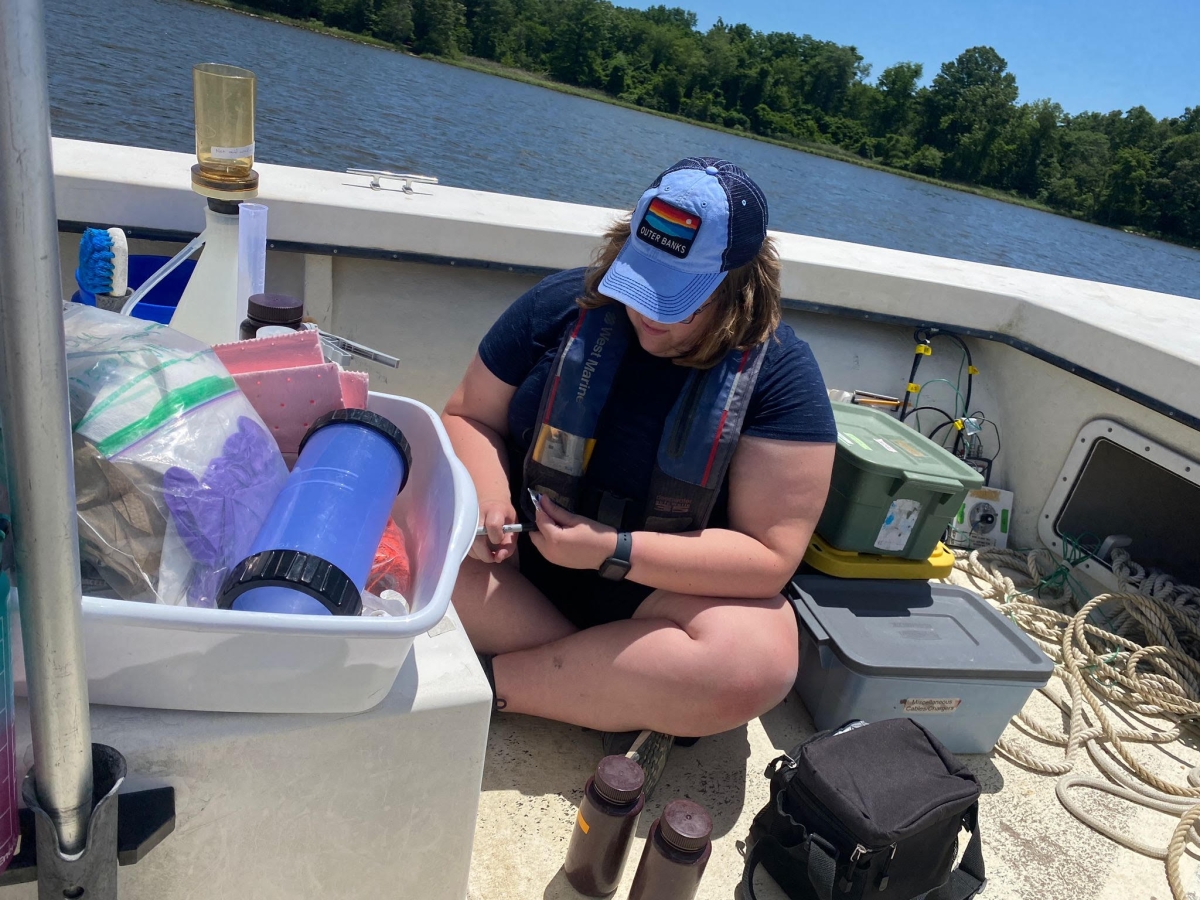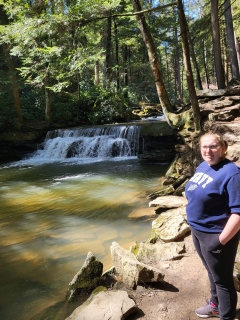Knauss legislative fellowships in Congress help build careers — and they're fun and educational. See our video and fact sheet for details.
The Ripple Effect: How a Love for Water Led Me to a PhD
I have always been drawn to the water. I spent my childhood around the Magothy River in Annapolis, Maryland. Even as a small child, I can remember my parents telling me not to go into the river—that it was nasty, foul, and bad for me. The desire to be in or near the water, and to take care of the water, has been with me since that early moment.
An AP environmental science class in tenth grade sealed my interest in making STEM my future pathway, and more specifically, in finding a way to make a difference for the environment. I followed that path to an earth science major at Salisbury University. Now, I’m a master’s student in the Marine Estuarine Environmental Sciences (MEES) graduate program, specializing in earth and ocean sciences. My research involves understanding how dead zones (areas with no or low oxygen) within the Chesapeake Bay will change with future warming and nutrients, and how this will impact organisms that live on the bottom of the Bay. I knew someday I would want to continue to a PhD. In January, I got that opportunity.
My advisor had seen my progress and dedication, and they were fully willing to support me and help with the transfer process. Yet, I began to question myself. Was it the right time? I am close to finishing my master’s degree, and if I do, should I gain work experience first? Do I really need a PhD to be a successful scientist?
If I transferred, I’d be able to continue working with my lab group and expand the scope of my research. My advisor is fantastic, and I have a lab group that is funny, positive, and provides great mentorship. I would be set up for success and have a great support system. At the end of the day, I knew I would not get another opportunity like this. So, I went through with the transfer—and I’m happy I did.
The transfer process was like applying for my master’s program, but much shorter. It took me only a couple of months. The biggest component you need for a transfer like this is a letter of support from your advisor expressing that they are on board and have funding. You should also have an outline of your goals and how you plan to expand or continue your research as a PhD student. The MEES program looks to see if you have the support and thoroughness to complete your research and the requirements for a PhD.

Now that I’ve transferred, I have a greater appreciation and understanding of my research. I’ve gained more independence as I explore the chapters of my dissertation. There are some areas in the Chesapeake Bay where mollusks (oysters, clams) and crustaceans (crabs, shrimp) cannot survive. I’m trying to understand how those areas will expand or contract under different climate change scenarios. I am also looking at how the biomass, or quantity and makeup, of benthic groups changes in those climate scenarios. Benthic organisms, like crabs and oysters, live on the bottom of the Bay. They help maintain sediment and water quality and are an important food source for other animals.
For the past few months, I’ve worked on submitting the first chapter of my dissertation. Writing and receiving feedback has become my life’s story. (I’ve learned that feedback is like kale salad; you may not enjoy it, but it’s healthy and helps you grow.) I’ve gained confidence working with peers who understand the interconnectivity of people and our impact on land-estuarine-ocean systems, specifically when it comes to the Chesapeake Bay.
I’m glad I went with my gut and transferred to a PhD. I can’t wait to see what adventures and challenges this new chapter brings. Someday, I hope to work for a state or federal entity, such as the Chesapeake Bay Program or NOAA. Perhaps my contributions will lead to a future where kids growing up on the Magothy River know it’s safe to swim and can enjoy the healthy, clean water in their backyard.
See all posts to the Fellowship Experiences blog



